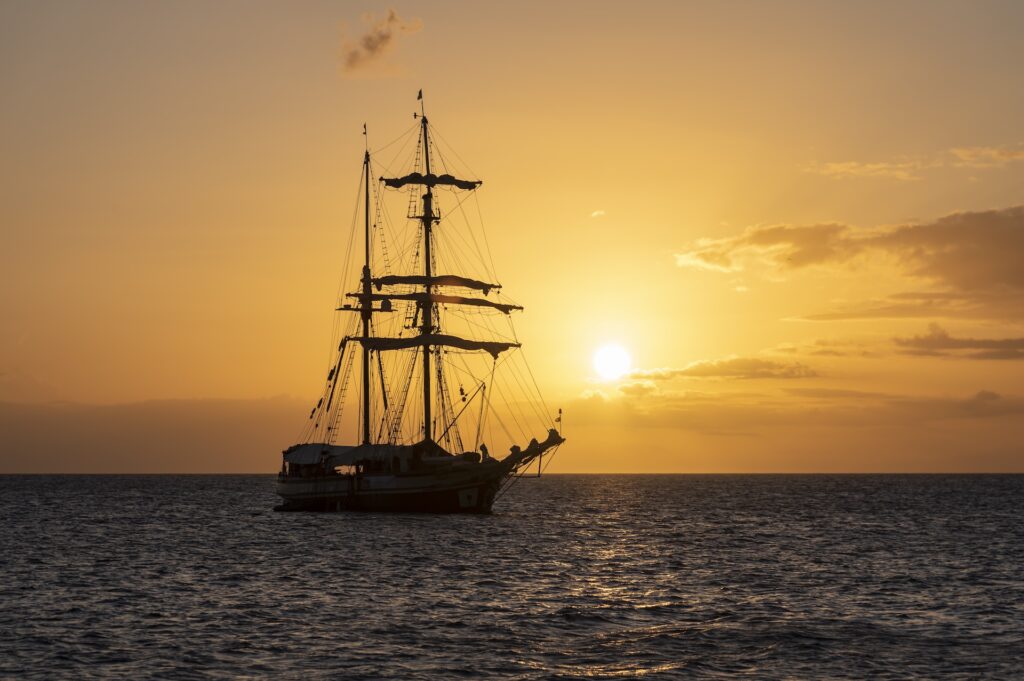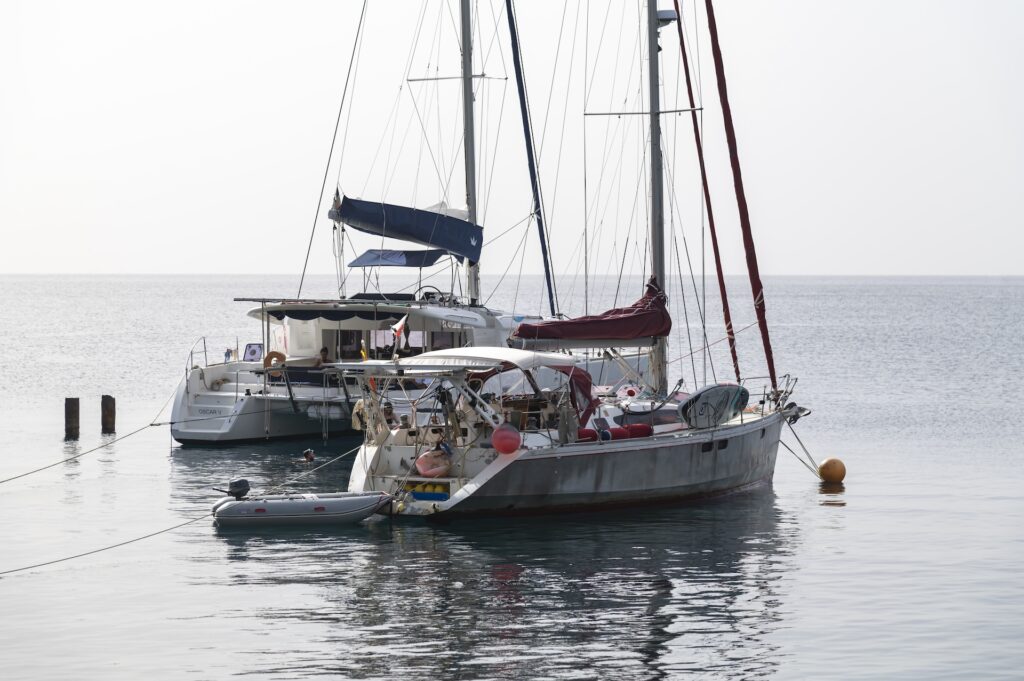Martinique & Grenadines
This time, we are going to Martinique to meet our cruiser friends and explore the surrounding island nations together. Over the next two weeks, we will visit Martinique, Saint Lucia, and Saint Vincent and the Grenadines. Let’s go!
Day zero
Getting there. We are flying to Martinique via Paris, and after a ten-hour flight, we arrive on the island to be greeted by heavy rain. It feels like good old Amsterdam all over again, but at least it’s hot. It’s late in the evening, and we still need to get to La Marine, where our friends are waiting. Our boat is there too. We rush to the car rental, grab our car, and start driving as soon as possible. The roads are decent, but surprisingly there’s a lot of traffic. Upon arrival, Taras is already waiting for us on the pier. After a short dinghy ride, we find ourselves on board Fortuna, where some drinks and late-night chatting are in order.
Day One
The morning starts slow and chill, with breakfast on board, a shower at the marina, and checking out what’s around. Our boat is ready only after four, so we have some time to spare. We hop in the car to explore the island. First, we visit a small coffee plantation to pick up some coffee. Then, we head to a nearby city to get essentials for the trip. For lunch, we stop at a restaurant near the botanical garden, Jardin de Balata. The food in Martinique is quite nice. It’s France after all. Even in a touristy place, the food is decent. The botanical garden itself is beautiful, well-maintained, and filled with colorful plants. The highlight is a canopy walkway suspended high in the trees. Unfortunately, it rains a lot, but it’s short tropical rains, and we quickly get used to it.
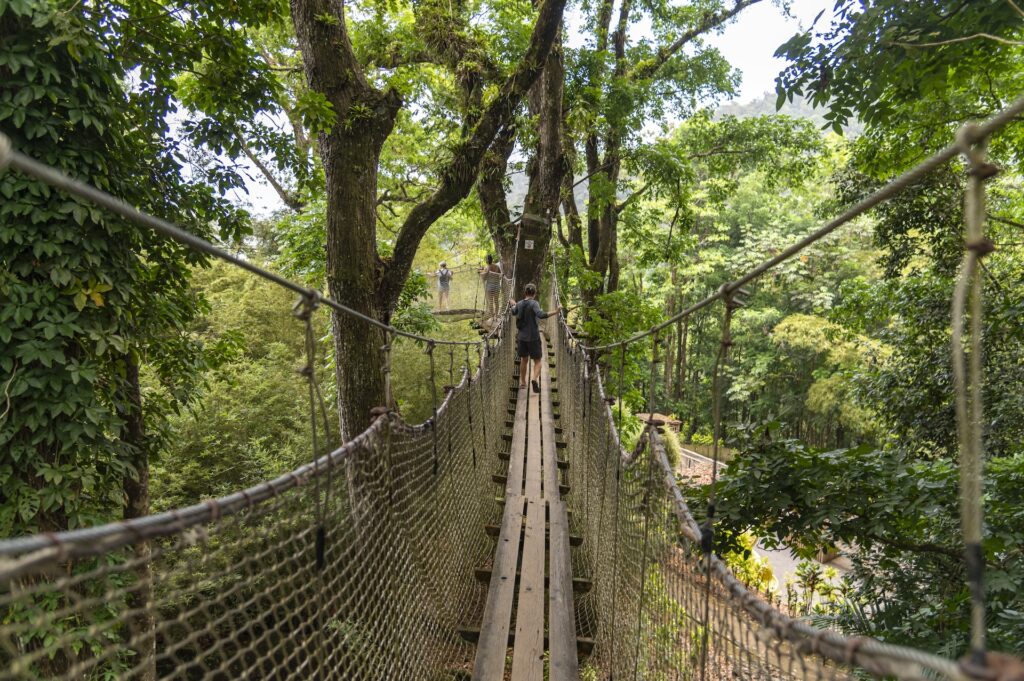
Back at the marina, our boat is ready, and we begin the standard check-in process. This includes paperwork, deposit payments, and provisioning runs. Everything is close by, and with two cars at our disposal, the process runs smoothly.
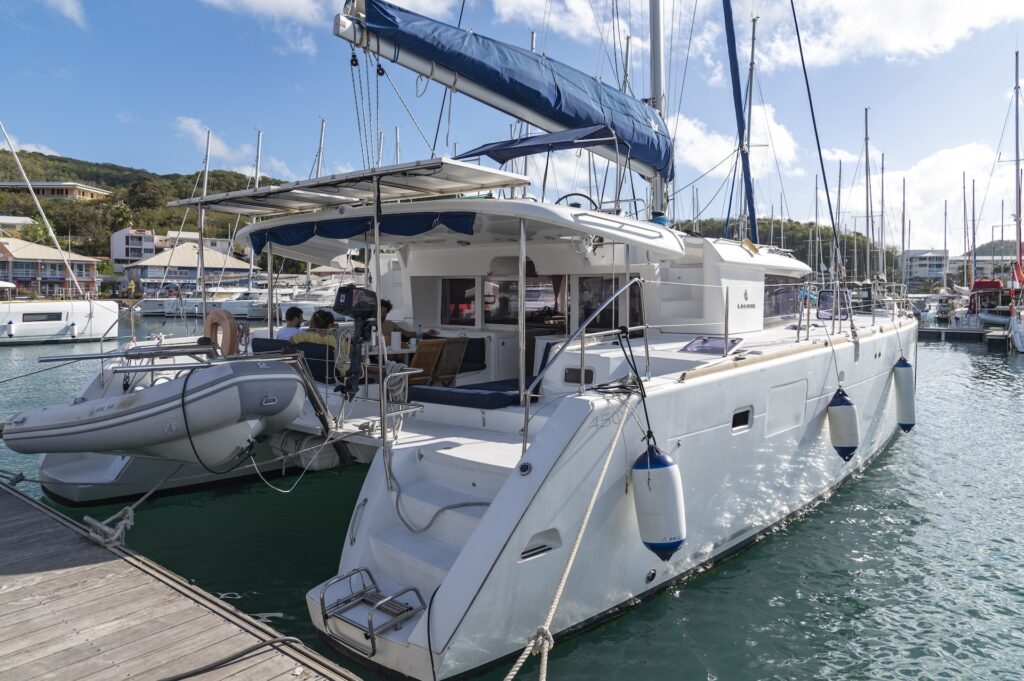
Day Two
I start the day with the technical boat check-in while the crew makes one last provisioning run. Once everything is ready, we return the rental cars and prepare for departure. As usual, we prefer not to go far on the first day. After navigating sinuous and narrow channel surrounded by shallow waters and reefs, we reach the closest anchorage. It’s a popular spot, and we find ourselves surrounded by hundreds of boats. Since it’s still early, we decide to go scuba diving from board of Fortuna. Taras has a couple of scuba tanks on board, and while we plan a night dive too, we ultimately decide to opt for dinner, cocktails, and relaxing on the catamaran. It’s not the most adventurous choice, but sometimes, taking it easy is just as fun.
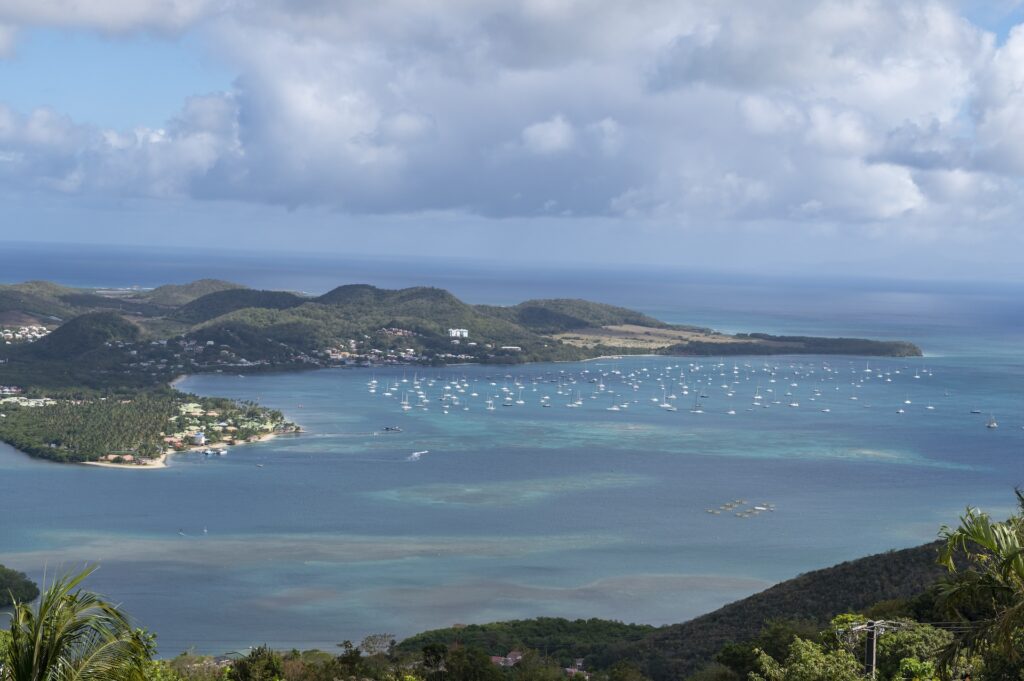
Day Three
This time, we keep our route flexible. The goal is to reach Grenada if possible, but visiting the Grenadines is also fine. One thing we all agree on is that we definitely need to visit Tobago Cays, with the rest being optional. The distances between islands are manageable, but a full day of sailing is often required. If the conditions allow, we might try non-stop sailing for a day, including some night sailing. The original plan was to skip Saint Lucia and Saint Vincent and head directly to Port Elizabeth.
However, the weather has other plans. The sea state is rough, with winds at 18 to 20 knots and stronger gusts due to the tunneling effect between islands. Neither I nor the crew is excited about night sailing in such conditions unless absolutely necessary. We change our plan and head to Rodney Bay in Saint Lucia instead. We arrive not too late, dropping anchor in eight meters of water on a nice sandy patch. The anchor holds well, allowing us to relax after the rough passage. We decide not to go ashore, as it would require checking into the country and then checking out the next day, which feels like too much hassle. In the Caribbean, a lot of islands are separate states, customs formalities are time-consuming and don’t make much sense to check in for one night.
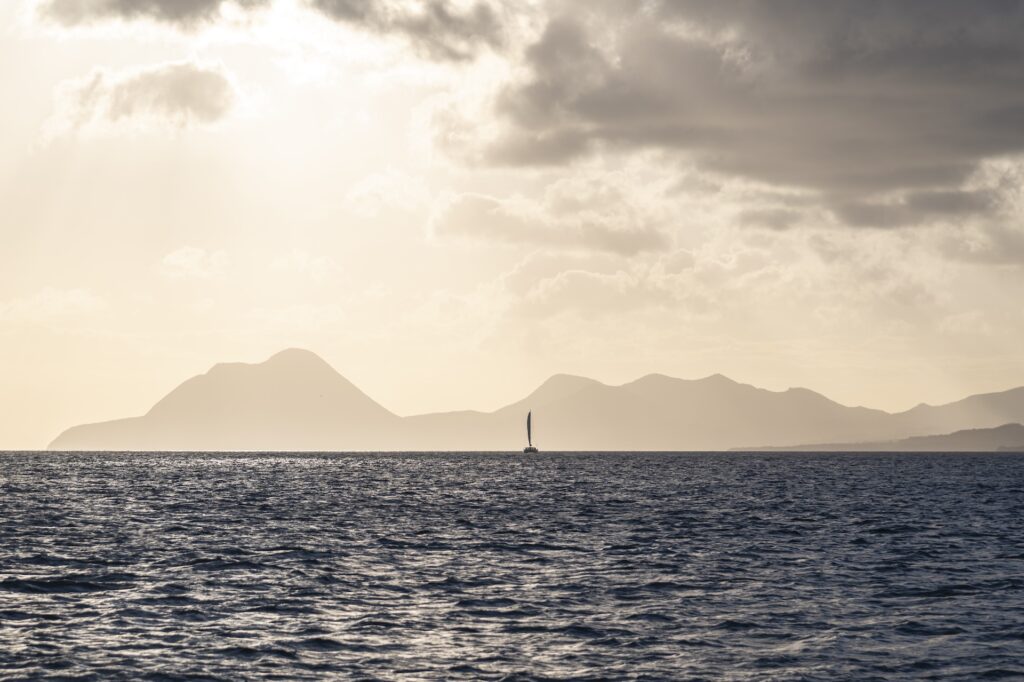
Day Four
The next morning, we wake up early to cover as much distance as possible and reach Port Elizabeth before dark. Unfortunately, we discover that while the windlass works perfectly when dropping the anchor, pulling it up is a different story. Even with no load on the chain, we cannot lift even a meter of it. This is not the best news at the beginning of the trip, especially since we are already one country away from the charter base. With no other option, all the men on board pull the chain by hand while I steer into the wind. It is no easy task. Sixty meters of ten-millimeter chain, plus the anchor, is quite a load. It passes as a morning workout for sure. With the anchor finally up, we face a 60-mile journey. At least we can still drop the anchor, which is good. The rest, we will figure out as we go. The passage itself is not very eventful. We sail with a reefed main and Genoa, maintaining speeds of over six knots. As we approach Saint Vincent, the wind drops significantly, blocked by the island, which is essentially one large mountain. We switch to motor sailing for the final stretch.
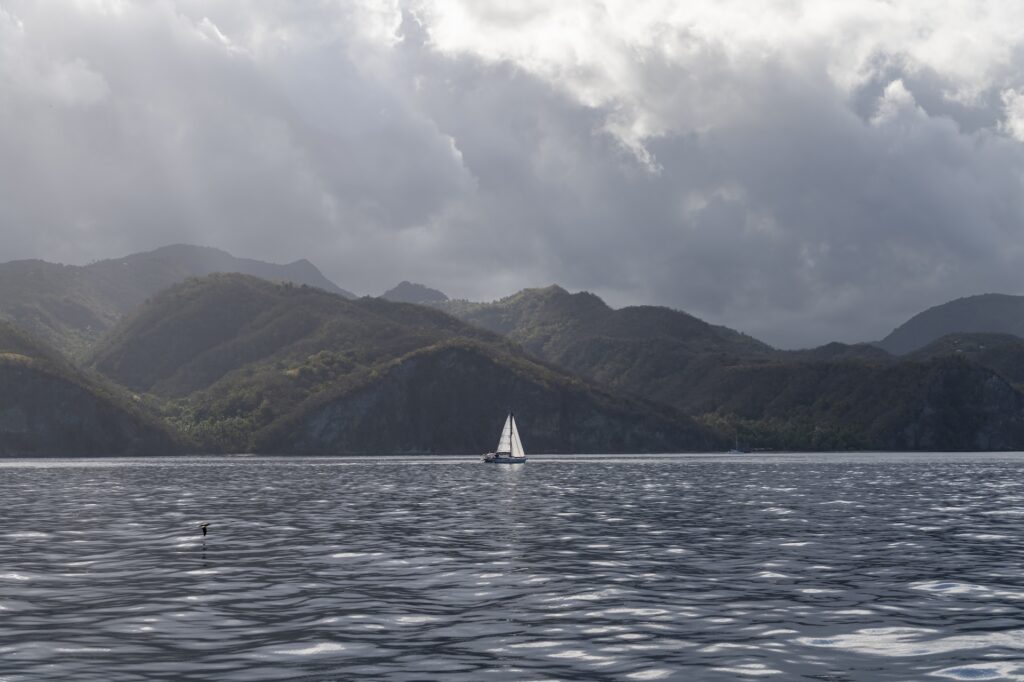
We arrive at Port Elizabeth just before sunset. The bay is very well protected, with multiple buoys available. Small boats dart around to help with mooring. We secure two buoys close together and are happy with the arrangement. Tomorrow, we will take care of the windlass and check in officially.
Day Five
Before checking in at Saint Vincent with local customs, only skippers are allowed ashore. We start the day by grabbing a dinghy, all the passports, some cash, and heading to the customs office. The process is a bit slow but straightforward overall. Once our paperwork is in order, we search for a mechanic to fix the windlass. Unfortunately, he is not on the island and won’t return for a few days. This leaves us with no choice but to rely on picking up buoys when possible and hauling the anchor by hand when necessary.
On the way back to the boat, we stop at a fully stocked chandlery to pick up some small items. By the time we return, the crew is finished with their morning routines and ready to explore the shore. I drop them off by dinghy and return to the catamaran to relax and catch my breath. It’s an easy day with no plans beyond taking it slow.
Day Six
Today is our first dive tour of the trip. We arrive at the dive shop ashore at 9 a.m. After sorting out gear and documents, we are split into two groups: licensed divers and DSD (Discover Scuba Diving) participants. The licensed group dives first while the others enjoy free time onshore.
The first dive is great. We see sharks and a massive lobster. The second dive is equally impressive, with more sharks, a moray eel, and our guide spearfishing a couple of lionfish. These invasive predators harm the local ecosystem, but they are also delicious, and restaurants pay good money for them. It’s a win-win situation, as divers protect the environment and make extra cash.
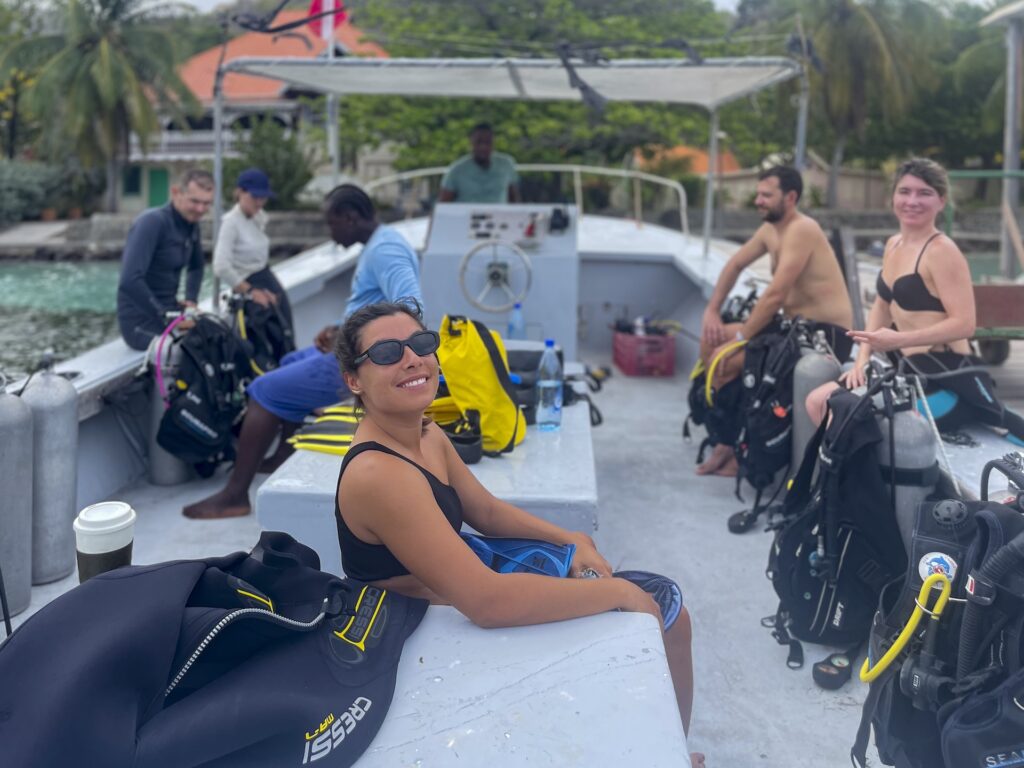
When we return to shore, the DSD group takes over the dive boat while we grab pizza and beer. The wait for their return becomes unexpectedly long, and we decide to head back to the catamaran. After two hours, we start to worry, but eventually, we see their dive boat towed in by couple small boats due to an engine failure. Despite the mishap, everyone is in good spirits. The evening is spent on the catamaran, enjoying dinner, drinks, and discussing the day’s adventures.
Day Seven
We have spent enough time on this island and decide to move on to Union Island. The sail is relatively short, taking just a couple of hours. Clifton Harbor is tricky to navigate, with a narrow entrance and numerous reefs. Thankfully, there are plenty of buoys available, so we don’t have to anchor.
Our main task here is arranging a dive tour for tomorrow. At the dive shop, we find the owner busy repairing a faulty air compressor. Fortunately, this does not affect our booking, and the dive boat will pick us up in the morning directly from the catamaran.
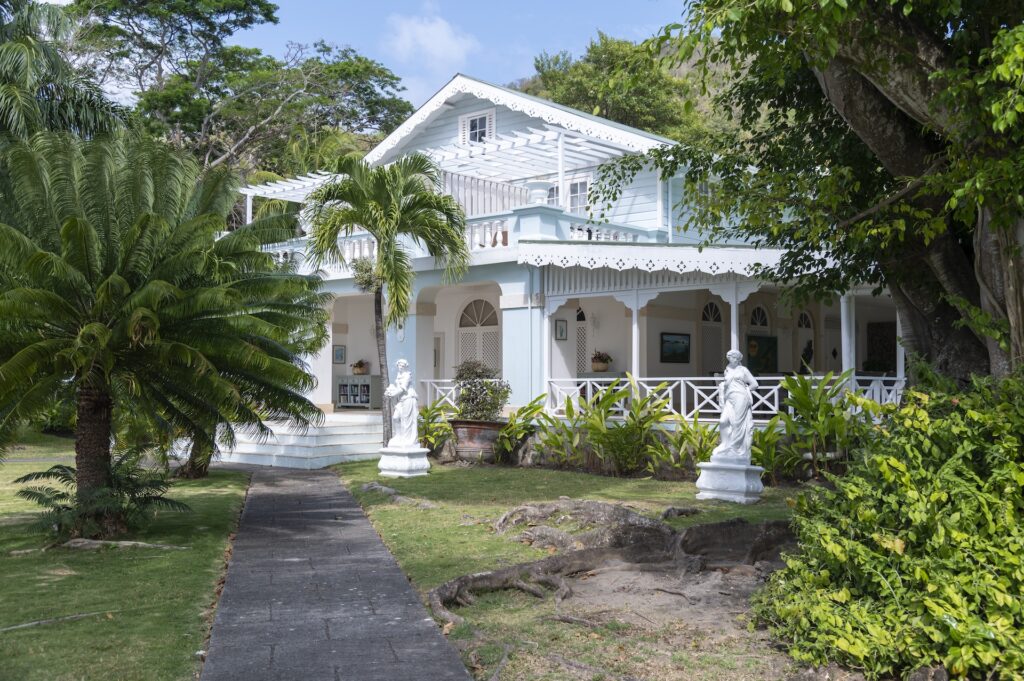
Day Eight
As promised, the dive boat picks us up and takes us to an atoll near Tobago Cays for two sequential dives. The islands are stunning, with crystal-clear water and inviting scenery.
The dives are fantastic. We see sharks and more moray eels. By now, I am seriously considering upgrading my underwater photography gear. My GoPro is functional but does not deliver the quality I want. After the dives, we return to the catamaran for a relaxing evening. It’s a great way to prepare for the next leg of our journey.
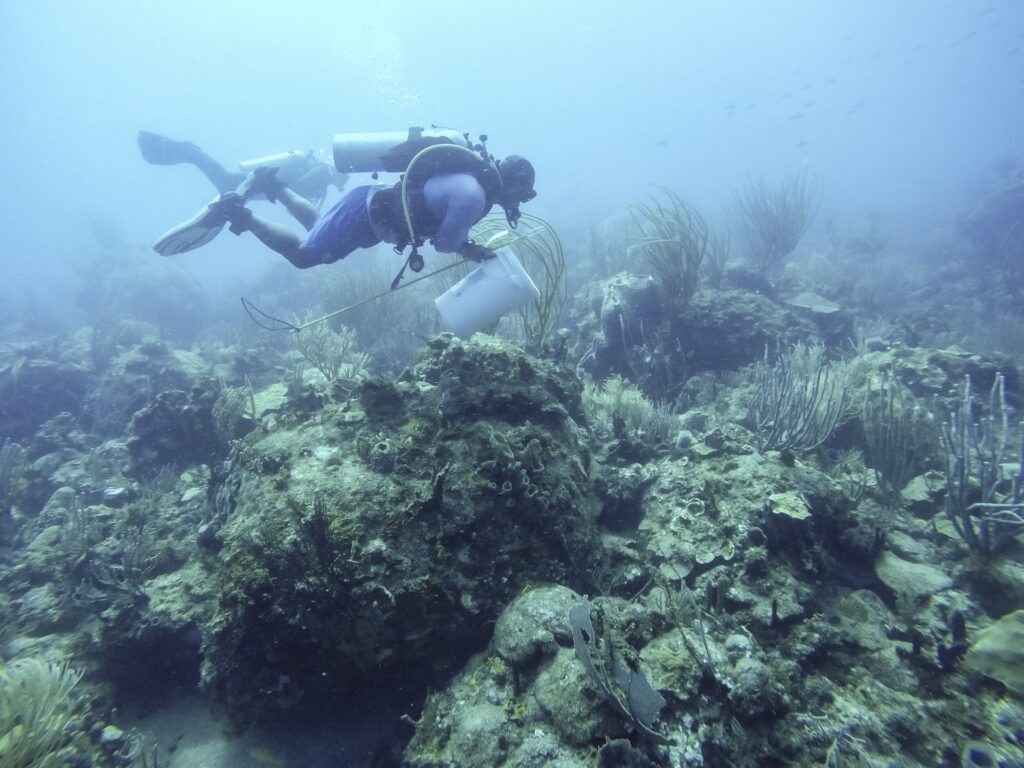
Day Nine
We move our boats to Tobago Cays, a marine park. Navigating through the inlets between reefs requires careful attention, but we successfully get inside atoll and pick up buoys between the islands. Protected by the reef, the water is calm, with no waves. The wind remains strong at 15 to 20 knots, but the boat stays steady.
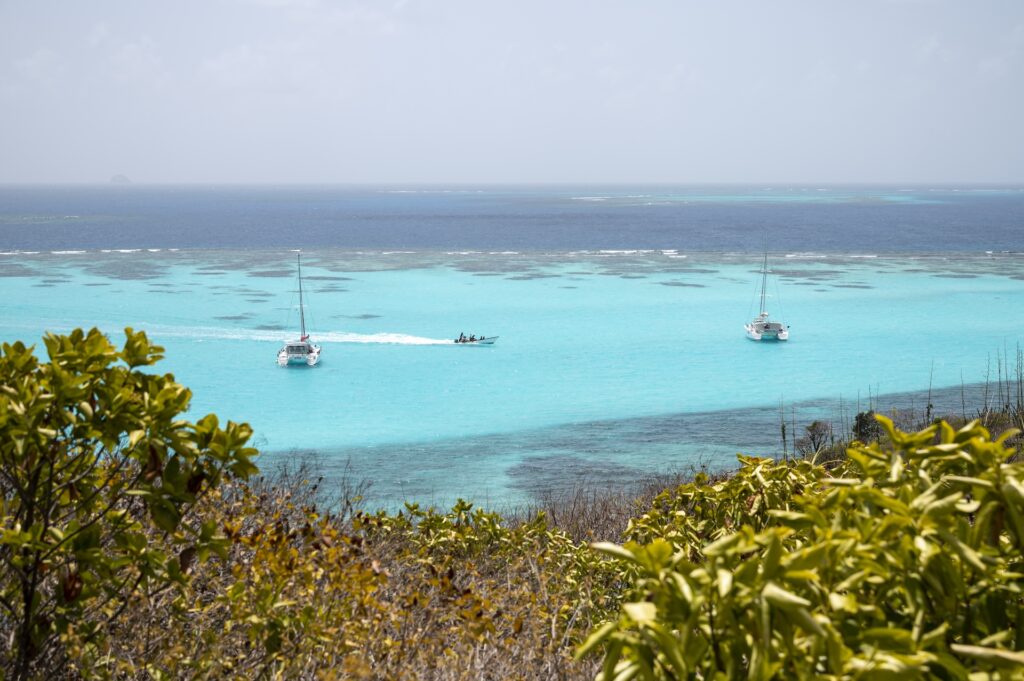
Tobago Cays is a peaceful spot with a few nice beaches and little else. In the evening, locals offer a beach barbecue for 50 euros per person, with lobster, fish, and chicken on the menu. It’s a great place to relax, go for a swim, or enjoy a beer on the beach. It’s also the perfect location for a group photo.
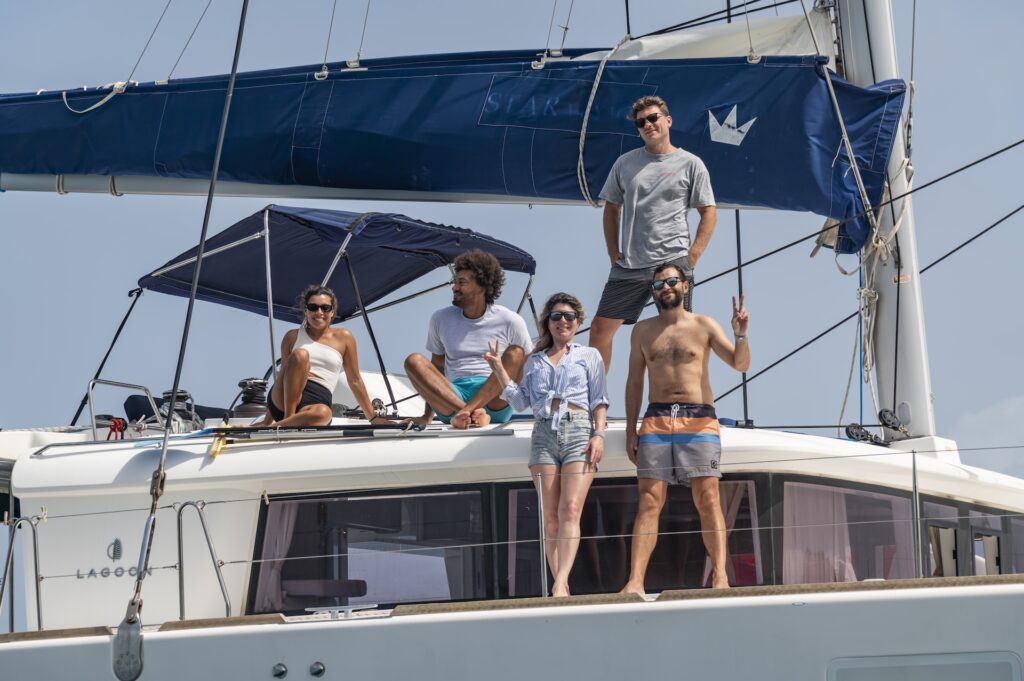
Day Ten
We decide to begin our journey back toward Martinique, but it’s too far to sail in one day. We plan to stop at a small bay called Wallilabou. This bay has a customs office, and we need to check out from Saint Vincent and the Grenadines. While researching the area, I read comments about it being a filming location for Pirates of the Caribbean, but I didn’t think much of it at the time. When we arrive after lunch, we discover that the bay is quite small. There are a few buoys available, but you need ropes tied to the shore to moor safely. Local helpers guide us and assist with setting up a web of ropes for a fee, with some extra beers as a tip. As we are busy mooring, our boat is swarmed by locals dressed as pirates, offering touristy stuff as bracelets, ice, and other supplies. We buy some ice and cola, even though the prices are equivalent to airport rates. It’s fine since we need the cola and ice, and the locals earn some money from it.
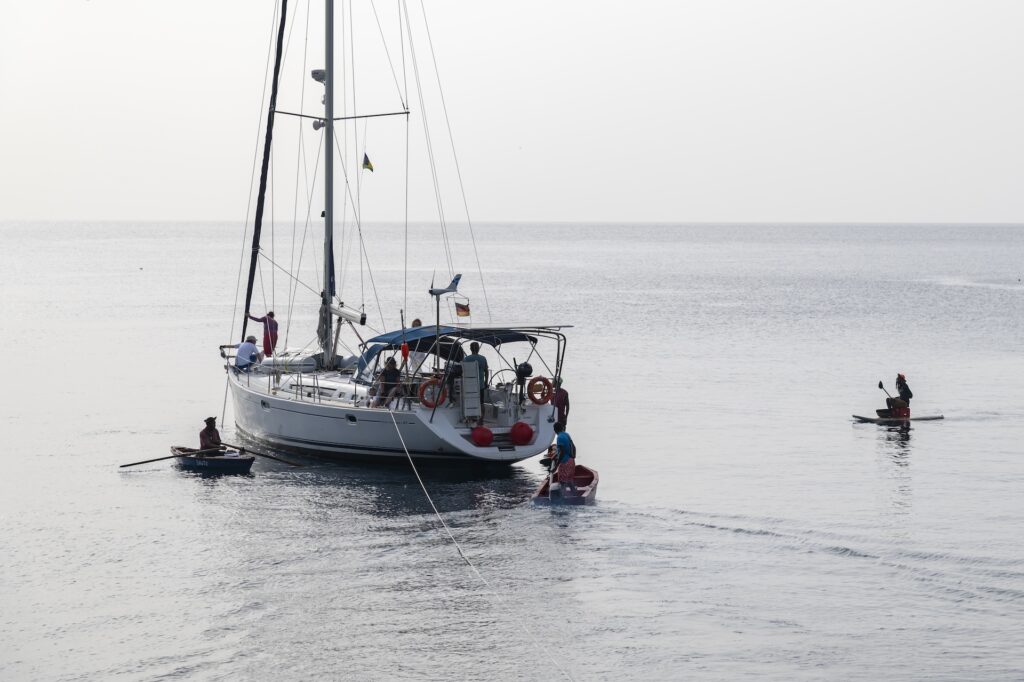
Once moored, we visit the customs office to take care of the formalities. Nearby, we stumble upon a place called Polski Dom na Karaibach (Polish House in the Caribbean). The owner, an amazing man in his seventies, welcomes us warmly. Besides serving the best rum punches I have ever tasted, he shares incredible stories from his life. He has worked as an F-16 mechanic, a taxi driver in New York, and even fought in Vietnam. Although he is not Polish, he has many Polish friends and proudly flies Polish and Ukrainian flags over his bar. He plans to expand the place into a restaurant and hotel. He also tells us all about the bay’s connection to the Pirates of the Caribbean franchise. Most of the first movie and parts of the second were filmed here. That evening, we watch the first movie onboard and are amazed to recognize scenes from the surroundings. It is such an unexpected and memorable experience.
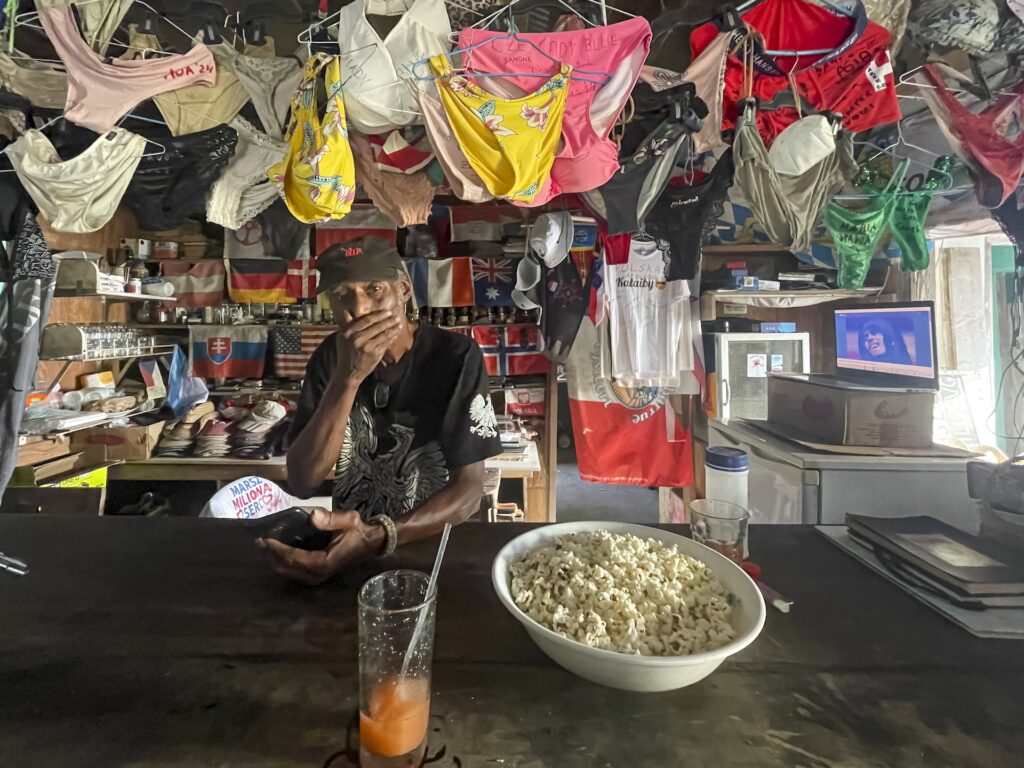
Day Eleven
Today is the longest leg of our trip. We need to sail 80 miles before sunset, so we depart at sunrise. The wind is strong, reaching 20 knots, and mostly favorable. The catamaran maintains speeds of nine knots, and we make good progress. As we approach Martinique, we have a unique encounter. One of our crew members, who used to work as a whale spotter, points to the water and shouts, “Whale!” At first, I don’t believe her, but her certainty is undeniable. Moments later, a whale surfaces directly ahead. We quickly adjust our course, but the whale dives under the boat and resurfaces behind us, blowing a fountain of water. It’s a breathtaking and close encounter. We arrive at the bay in Martinique around sunset, drop anchor, and spend the evening preparing a barbecue on board. It is a relaxing end to a long day.
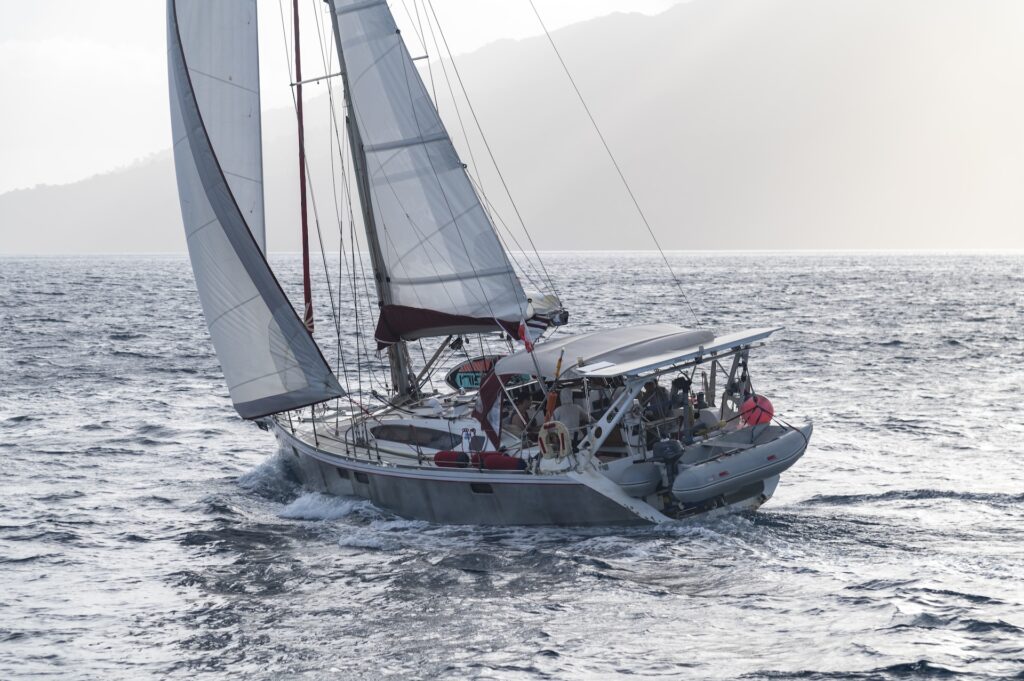
Day Twelve
We plan to stay in this bay for a couple of days. In the morning, we try to move the catamaran closer to the shore, but it proves challenging. The anchor keeps dragging on the hard bottom and refuses to set properly. After several attempts, we finally secure the boat. By lunchtime, everyone is exhausted and ready to head ashore to enjoy some food and a bit of civilization. After spending the past week away from shops and restaurants, the change is refreshing.
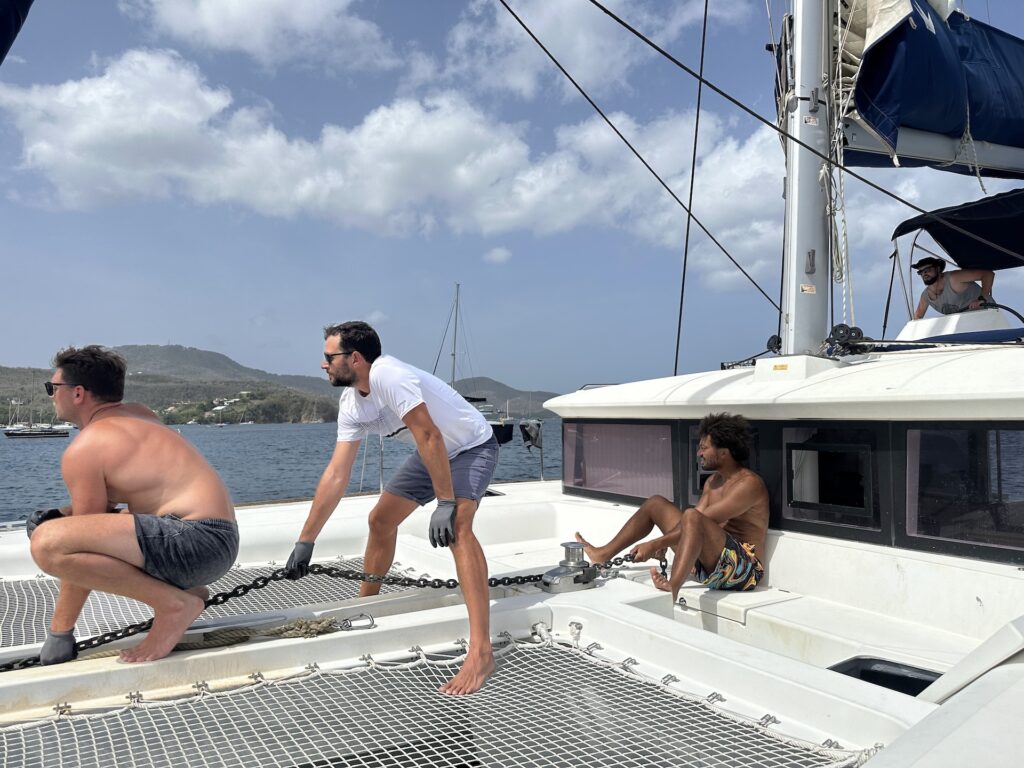
Day Thirteen
Today, we go diving again. This time, we join a massive double-deck dive boat filled with families, including many children. Most of the other divers and instructors are French.
The first dive goes well, with sightings of turtles, moray eels, and more lionfish. Afterward, we are treated to a strong rum punch, marking the first time I’ve had a drink on a dive boat. For lunch, we return ashore for some excellent takeout sandwiches. The second dive is just as enjoyable. By the time we get back to the catamaran, the sun is setting. We finish the evening with a barbecue onboard, savoring our last few days at sea.
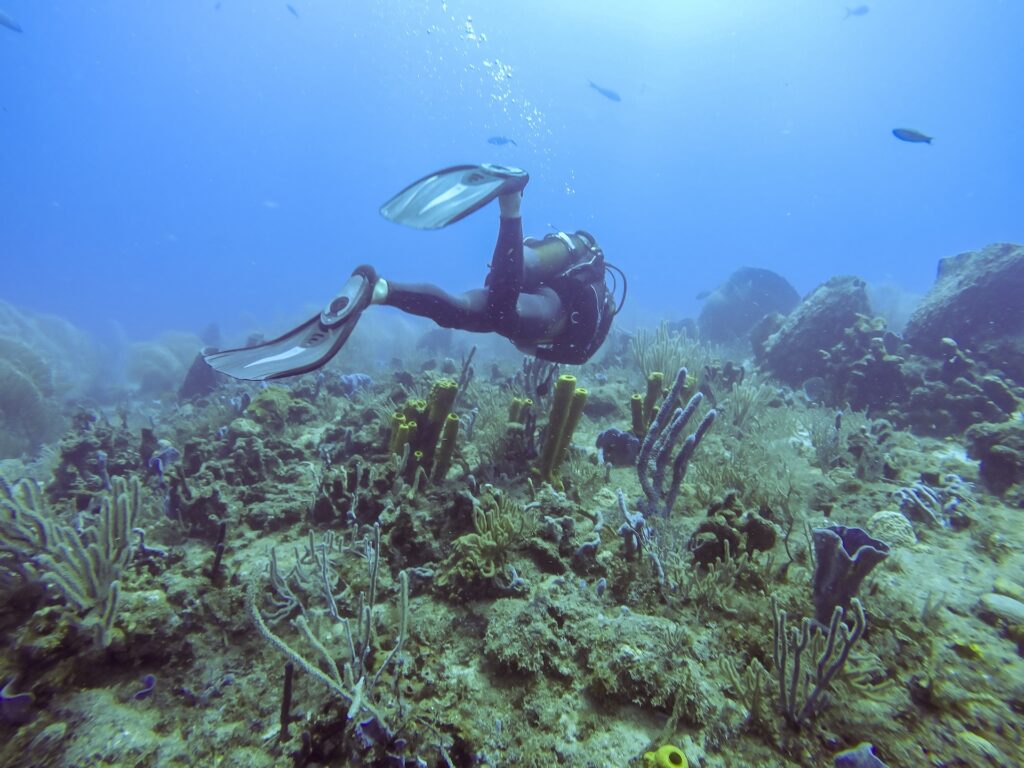
Day Fourteen
It’s time to head back to the base. The wind conditions are not in our favor, so we motor the 15 miles against the wind. Upon arrival, we refuel the boat, moor it, and start preparing for checkout. It is always a bit sad on the last day of a trip, as we have to say goodbye to our friends and the adventure. To lift our spirits, we go out for a quality dinner together at a nice restaurant, cherishing our final evening.
